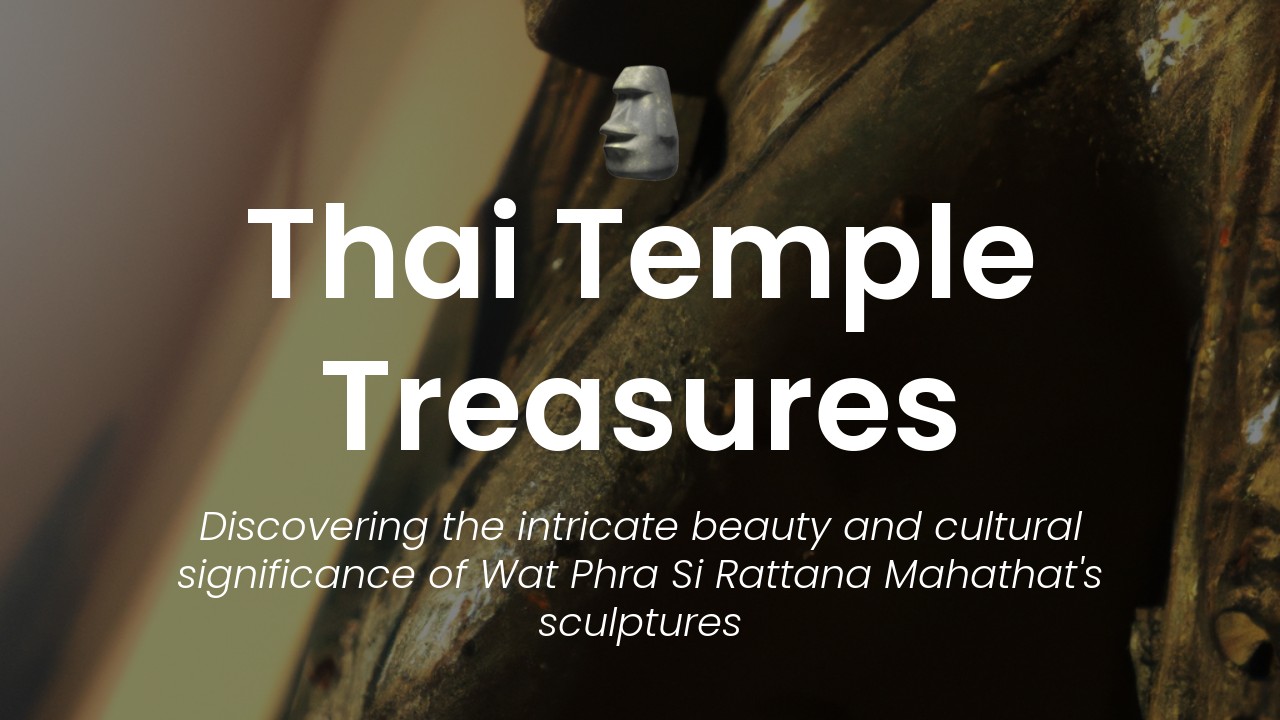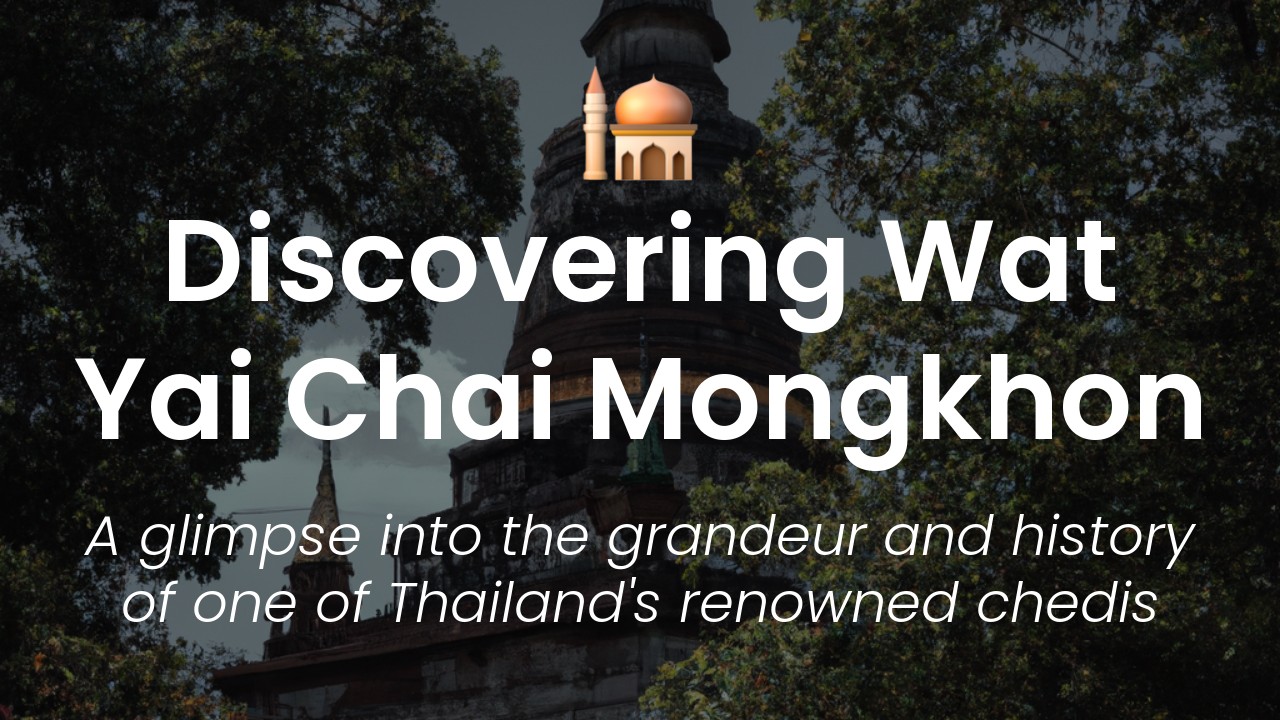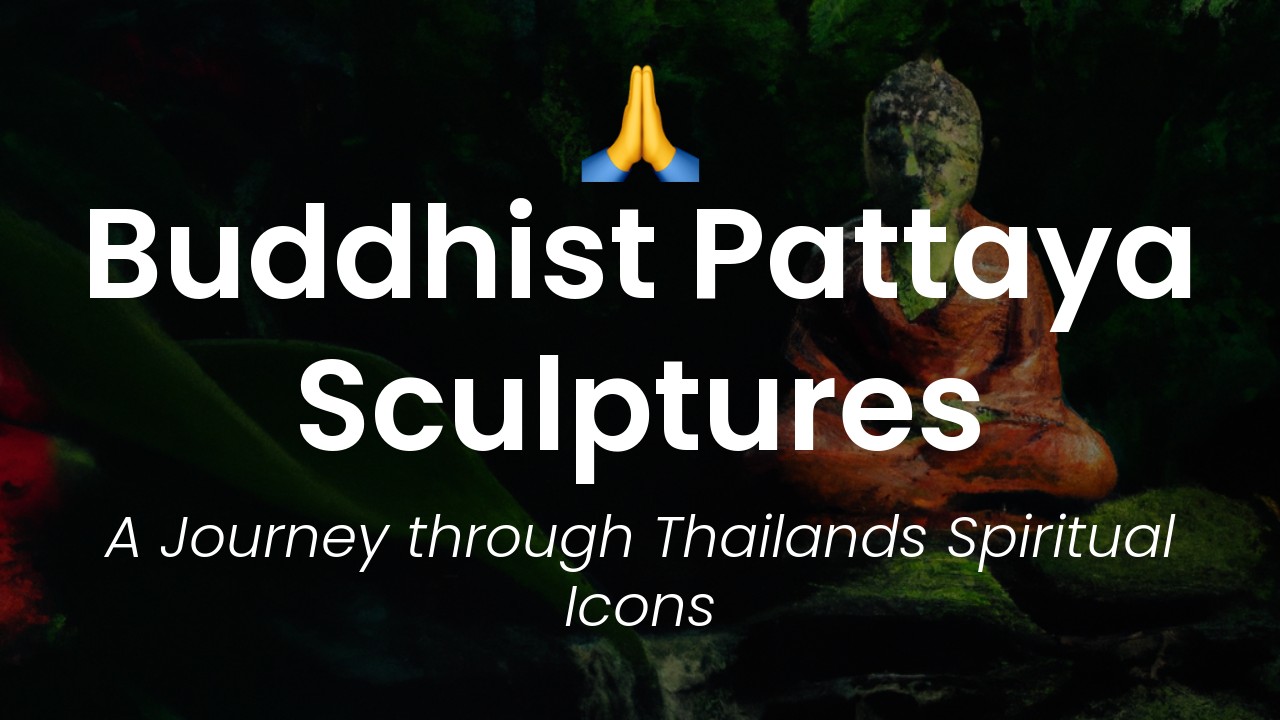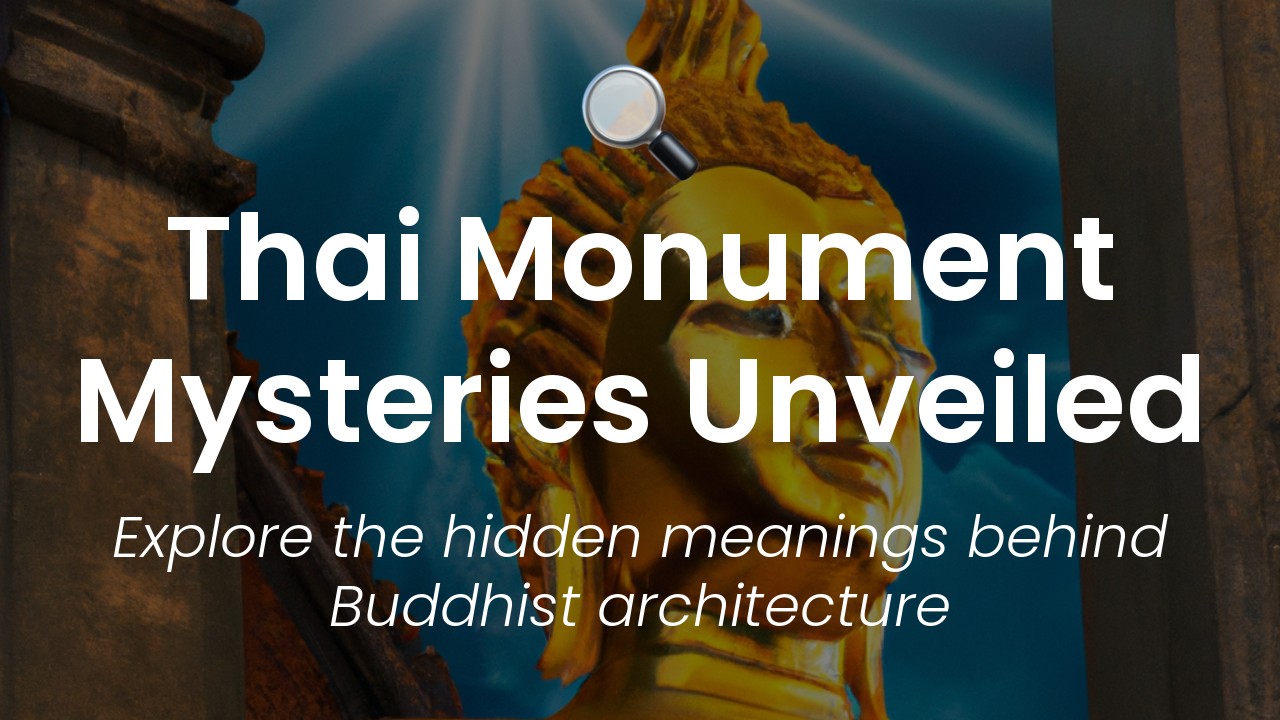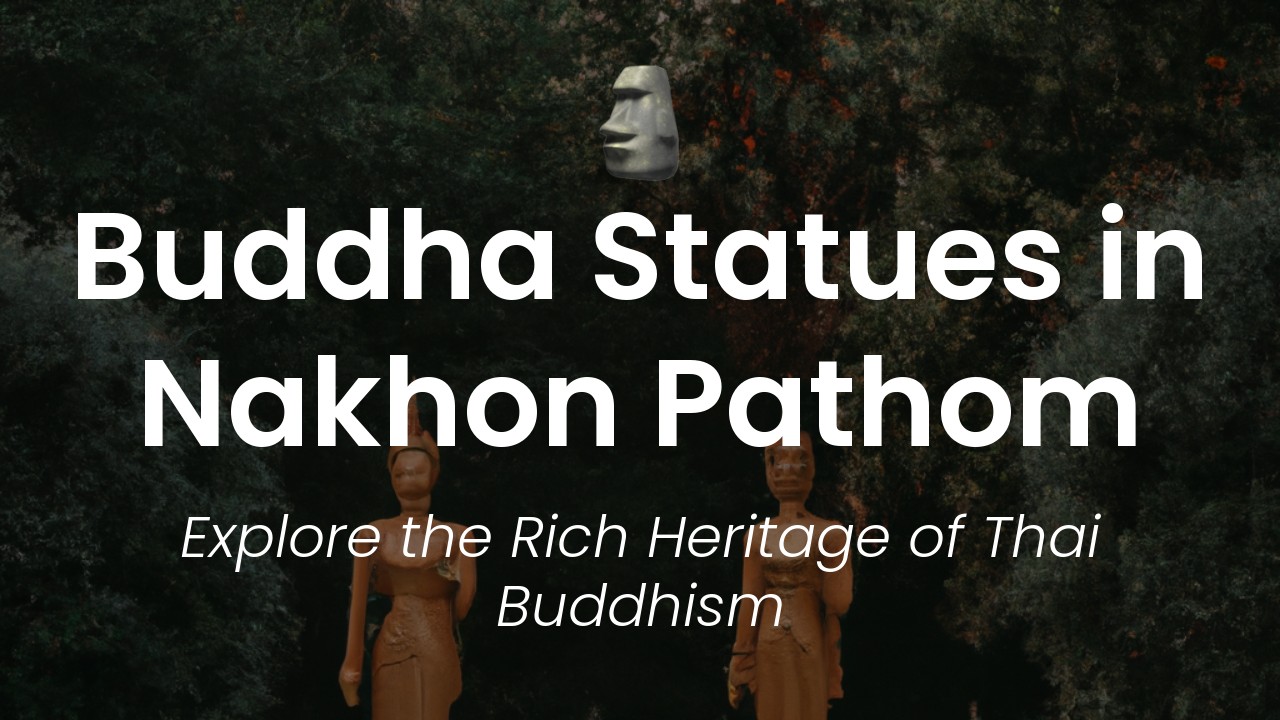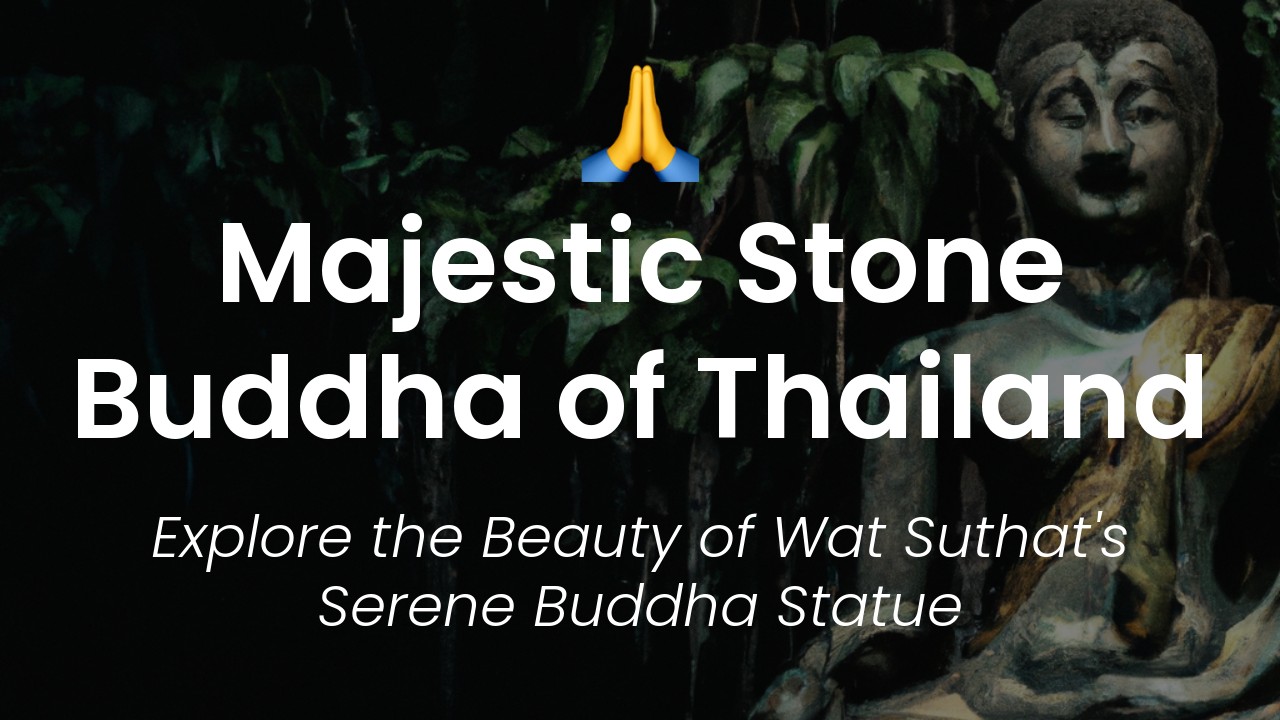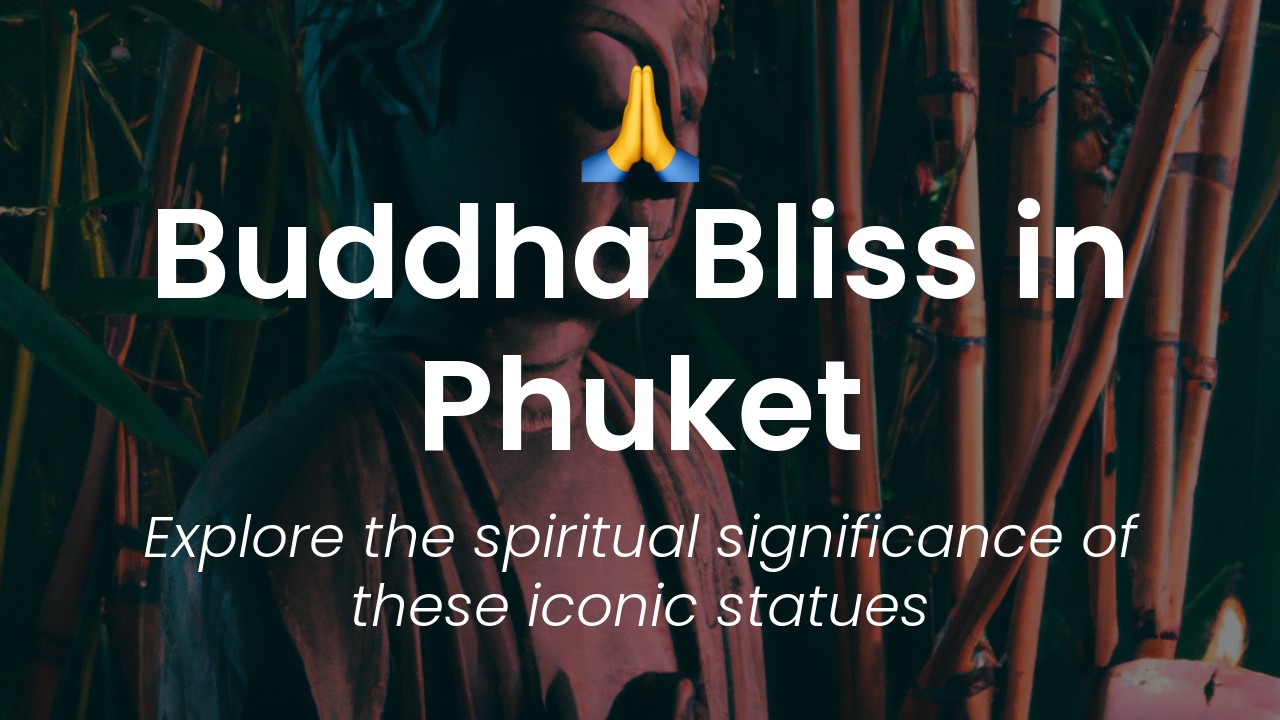As a Thai cultural enthusiast and blogger, I've visited countless temples around Thailand. Yet, there is one particular temple that stands out for me: Wat Phra Si Rattana Mahathat, located in the heart of the old city of Phitsanulok in Northern Thailand. Not only does this ancient temple have a rich history that dates back to the 14th century, but it is also home to some of the most intricate and captivating sculptures that I've ever seen.
While Wat Phra Si Rattana Mahathat may not be as well-known as some of Thailand's more prominent temples, such as the Grand Palace in Bangkok or Wat Phra That Doi Suthep in Chiang Mai, it is undoubtedly a hidden gem that is worth exploring. The temple's ornate architecture and stunning sculptures are a testament to the rich cultural heritage of Thailand, and offer a unique glimpse into the country's past.
In this blog post, I'll be taking you on a journey through Wat Phra Si Rattana Mahathat's rich history and highlighting some of the most impressive sculptures that you'll find within its walls. From intricate depictions of the Buddha to whimsical mythical creatures and lifelike mannequins, the temple's sculptures are truly a feast for the eyes. So, whether you're a seasoned traveler or just starting to explore the wonders of Thailand, join me as we uncover the hidden gems of Wat Phra Si Rattana Mahathat's sculptures.
History of Wat Phra Si Rattana Mahathat
Wat Phra Si Rattana Mahathat, also known as the Temple of the Royal Restoration, is a Buddhist temple located in the heart of Phitsanulok, a city in northern Thailand. The temple has a long and fascinating history that dates back to the 14th century. It was founded by King Lithai of the Sukhothai Kingdom (reign 1347-1368) as a place to enshrine relics of the Buddha.
Over the centuries, the temple has undergone numerous renovations and expansions, particularly during the reign of King Borommatrailokanat (reign 1448-1488) of the Ayutthaya Kingdom. During this time, the temple's main hall, called the Phra Ubosot, was built, and many of the temple's most significant sculptures were created or restored.
In the 19th century, the temple was once again renovated, this time by King Mongkut (reign 1851-1868) of the Rattanakosin Kingdom. It was during this time that the temple gained its current name, Wat Phra Si Rattana Mahathat, which means the Temple of the Great Jewel Buddha Image.
Overview of the sculpture collection
One of the most impressive features of Wat Phra Si Rattana Mahathat is its collection of sculptures, which includes some of the finest examples of Thai Buddhist art in the country. The sculptures are located in several different areas of the temple, including the Phra Ubosot, the Viharn Luang, and the sculpture garden.
The sculptures range in size from small amulet-sized pieces to massive, life-size figures, and they depict a variety of Buddhist deities, historical figures, and mythical creatures. Many of the sculptures are made from bronze, copper, or gold, while others are carved from wood or stone.
The Buddha image in the main hall
In the Phra Ubosot, the temple's main hall, visitors will find the centerpiece of the sculpture collection, a massive gold-plated Buddha image that measures over 16 meters in height. The image, which is known as the Phra Buddha Chinnarat, is considered one of the most important and sacred Buddha images in Thailand.
The Phra Buddha Chinnarat is depicted in the posture of meditation, with his right hand touching the ground, which represents his victory over Mara, the demon of desire. The image is surrounded by smaller images of the Buddha, as well as images of important Buddhist disciples and guardians.
Hidden gems in the side chapels
While the Phra Ubosot and the Viharn Luang are the most well-known areas of the temple for exploring the sculptures, there are also several small side chapels that shouldn't be missed. These chapels are located along the outer edge of the temple grounds and are often overlooked by visitors.
In these chapels, visitors can find a variety of unique and interesting sculptures, including depictions of the four-faced Brahma, the Hindu god of creation, and the eight-armed form of the god Vishnu. The sculptures in these chapels are smaller and more intimate than those found in the Phra Ubosot and the Viharn Luang, and they offer a chance to see a different side of the temple's sculpture collection.
Unique features of the sculptures
What sets the sculptures at Wat Phra Si Rattana Mahathat apart from those found at other temples in Thailand is their intricate and detailed craftsmanship. Many of the sculptures are incredibly lifelike, with features and expressions that seem to come to life. Others are more abstract, with exaggerated shapes and proportions that add to their dramatic impact.
The sculptors who created these pieces were clearly master craftsmen, with a deep understanding of the Buddhist iconography and religious traditions. Each sculpture tells a story or conveys a specific message, whether it's the triumph of good over evil, the importance of compassion and kindness, or the impermanence of all things.
Symbolism and meaning behind the artwork
One of the reasons that the sculptures at Wat Phra Si Rattana Mahathat are so fascinating is their rich symbolism and deep meaning. Each figure and symbol in a sculpture has a specific purpose and represents a particular aspect of Buddhist philosophy.
For example, many of the sculptures depict the Buddha in various postures and hand gestures, such as the posture of meditation or the mudra of generosity. Each posture and gesture has a specific meaning and emphasizes a particular aspect of the Buddha's teachings.
Similarly, many of the sculptures depict Buddhist deities and guardians, each of which has a specific role to play in protecting and guiding devotees on their spiritual journey.
Tips for visiting the temple's sculpture garden
In addition to the sculptures located inside the temple, Wat Phra Si Rattana Mahathat also has a lovely outdoor sculpture garden that is definitely worth a visit. The garden is located adjacent to the temple grounds and is home to a variety of large bronze sculptures depicting Buddhist themes and characters.
To fully appreciate the sculptures in the garden, it's best to take your time and walk slowly through the space, allowing yourself to get lost in the intricate details and symbolism of each piece. Be sure to bring a camera, as there are plenty of photo opportunities to be had.
Finally, be respectful of the holiness of the space and the sculptures themselves. Remember that Wat Phra Si Rattana Mahathat is a sacred site and treat the sculptures with the reverence they deserve.
Conclusion
Wat Phra Si Rattana Mahathat is without a doubt one of the most fascinating and visually stunning Buddhist temples in Thailand. Its collection of sculptures is truly impressive, offering a window into the rich cultural and religious traditions of the country. Whether you're a seasoned traveler or a first-time visitor to Thailand, a visit to this incredible temple is a must.

